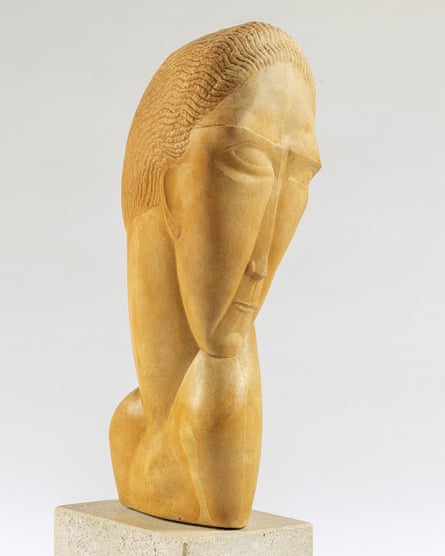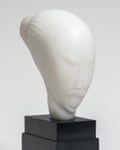The glazed porcelain vases with bold colours and geometric shapes of the 1920s and 30s are immediately recognisable to many people, says the art historian Cécile Dubois. Often given as a wedding present, these vases were usually passed down as family heirlooms, revealing the accessibility of art deco works, she says, gesturing to the glass cabinet beside her. “If you were a collector, you could find works that cost a fortune, but these pieces were destined for people of more modest means for very reasonable prices.”
Art deco was the first artistic movement that sought to appeal to a wider public beyond the elites, say the organisers of a new exhibition dedicated to the artistic movement of the interwar years, co-curated by Dubois, the president of the Brussels Art Deco Society.
The exhibition, which opened this month at the BELvue museum in Brussels, brings together for the first time works owned by the King Baudouin Foundation, which was founded through a donation from the late Belgian monarch in 1976. It is part of the Belgian capital’s year-long celebration of art deco – events and exhibitions to recognise and market Brussels as a centre for the artistic movement known for its geometric designs, exotic motifs and opulent materials.

Through this modest exhibition of sculptures, vases, furniture and everyday artworks, the museum aims to chart the evolution of art deco: from luxurious hand-crafted goods for the few, to mass-produced objects aimed at middle-class consumers around the world. “It’s the first style that spread in all layers of society, from the richest to the poor people,” says Werner Adriaenssens, another co-curator and an art history professor at the Free University of Brussels.
During the interwar years, brightly coloured geometric-patterned ceramic tiles were exported from Belgium’s industrial heartlands all around the world. Ships left the port of Antwerp laden with tiles destined for kitchens, bathrooms and shops.
Art deco was the first global style. From Paris, often credited as the birthplace of the movement, it spread to New York, Soviet Moscow, Shanghai, Beirut and Brussels.
Many of the “wedding gift” vases were designed in the southern Belgium town of La Louvière by the Franco-Belgian artist Charles Catteau, who oversaw production of decorative ceramics at Boch Frères during the interwar years. The company was a Belgian offshoot of the Franco-Luxembourgish ceramics dynasty, founded 14 years after the Belgian revolution of 1830. By 1935 it employed 1,350 people. Catteau did not design all the pieces but supervised the models, colours and finish of the glazes. His signature was stamped on every piece, a kind of trademark.
As art met commerce, governments realised the creative sector had economic weight. Economic considerations led Belgium’s government to participate in the International Exhibition of Modern Decorative and Industrial Arts in Paris in 1925, a show seen as the founding moment of the art deco movement, although almost no one used that term until decades later. “The only reason to participate for Belgium in 25 was that the government was convinced that the decorative hearts had an economic impact,” Adriaenssens said.

That Paris exhibition in 1925 heralded a shift from art nouveau of the prewar years, especially in the depiction of women. No longer the dreamy feminine ideal of art nouveau, women in art deco were often elegant, stylised and powerful. Emblematic of the shift is a 1925 sculpture by the Flemish artist Oscar Jespers: influenced by cubism, the work Fine Pearl shows a female face that is abstract, modern, ghost-like.
Catteau’s vases reflect cubist influences, as well as a fascination with exotic birds and animals, probably inspired by the Belgian Congo. According to Adriaenssens, art deco artists were the first to do market research. “They were really searching, what does the middle class want?” So they did not shy away from older themes, such as ancient Greek-inspired pottery, but with modern geometric shapes and glazes.
Art nouveau, as the name implies, wanted to be new, Adriaenssens observed. “Art deco has not that aspiration to be completely new, but to be modern.”

 3 months ago
92
3 months ago
92

















































